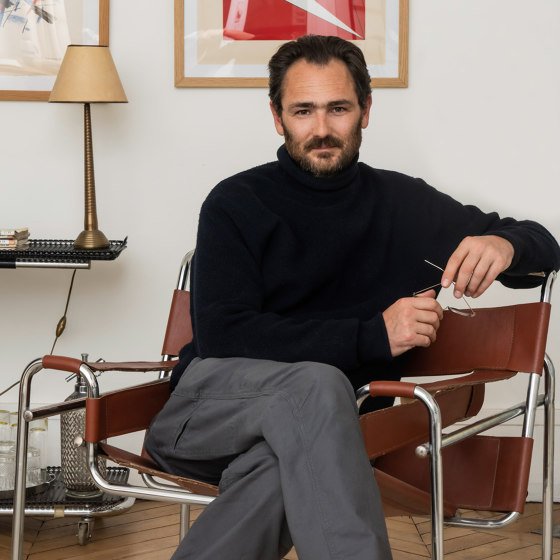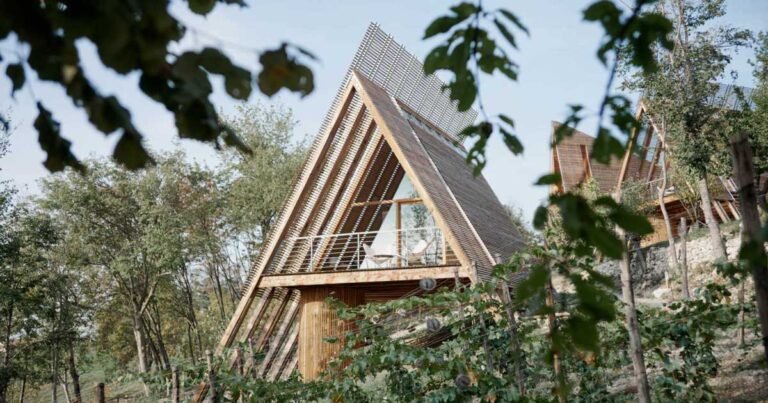Tom and Jerry Hostel / DL Atelier
Tom and Jerry Hostel / DL Atelier


B&B and Games – At the end of 2020, near the Great Wall at Shuiguan in Huairou, Beijing, we designed three projects for Xiaoxi B&B simultaneously, perhaps it is more appropriate to call them rural hotels than B&Bs. I have designed and run such hotels before, and I would love to have a unique living experience of “breaking away from daily life” and a lifestyle of “here and now”. Architecture, as a carrier of this conception, is not a “home building” in the first place, for it holds little real life and memory of the owner, instead it resembles a “theme park” with the characteristics above, a reciprocating game between reality and fantasy. Since it is a game, there must be rules. The owner’s requirements are simple: to keep the characters of the three existing houses. And we will make up the rules.


The Great Wall and the Danger – The site is unique with the Great Wall from the Ming Dynasty close at hand. The strong characteristics have become an attraction that cannot be ignored, which makes me more or less reluctant. My habit is to look for the emotional relationship between things and people. Yet how is the Great Wall touching? Through its superhuman existence. It does not originate from human’s willingness to talk to God like the Egyptian pyramids or the Nasca Lines. The Great Wall comes from “danger”. Out of the fear of “danger”, we chose the most “dangerous” mountain. This energy and courage are powerful enough to change something as great as the earth, even though we have known it from an early age, still, fantasize about this expected surprise when we face it. Therefore, creating a little “danger” provocation in the construction of settling-down architecture makes me interested. Will it bring some different stimulation and strength? I don’t know, but I’m curious. So we set the game as three small attempts about “danger”.


The Second Scene “Tom and Terry” – Biodiversity: Go over the northern ridge of the Harrier Valley Castle and come to the entrance of Erdaoguan Village. The walnut trees that cover the sky make people chill and relax, while the courtyard of the second play behind the trees. The first time we stepped into the courtyard, seven or eight kittens were playing, and two dogs were lazing in the sun with no sense of looking after the house. A few hens were quite energetic, wandering back and forth doing nothing. This scene reminds me of the wonderful picture in the animated film “Tom and Terry“, a scene that seems to be dangerous but is actually full of life. In other words, “biodiversity”. However, the living space of young people seems to have similar characteristics. The intimate scale, public and private, far and close, stirring up the dangerous relationship between each other.


Hutong Forest: How to build such a diverse and shared ecosystem? Maybe we could learn from the Beijing Hutong that I am familiar with. In Hutong, ancient buildings hundreds of years ago, illegal buildings decades ago, and new buildings in recent years are intertwined; The man who plays chess, the intellectual who studies at work, and the internet influencers who are photographed in the shop become each other’s company. All the people here seem to be mixed, but if you really live in it, you will feel the tranquility under the rich vitality, like the forest or the ocean. The residential space scale of Hutong is small, the sense of distance and privacy between people is gradually blurred, and the extroversion of space also makes people more and more extroverted, slowly forming a group portrait that “Beijing people can talk”. Although it is not absolute, there are factors that change behavior and even personality in this space, and this is exactly what we rely on to build an intimate and warm space prototype.


Scaling down: The courtyard covers an area of nearly 600 square meters, and the original houses are all reserved. After the addition of activity rooms, the building area is more than 400 square meters. In this not-spacious space, we subdivided 13 courtyards and 27 rooms to accommodate the life of more than 20 people, making the residential density close to the extreme scale relationship of the hutong. On this basis, a “collage” construction is used to create an uncontrollable sense of time, while multiple hierarchical systems are nested with each other, and the intimacy and tranquility under a certain complex relationship is the desired space atmosphere after the careful operation.


Collage construction: The first level is the public dining room, kitchen, game room, and central courtyard. It is the most public area connecting with the walnut forest outside the site. On the second level, the living space is divided into three groups that can be disassembled and combined, each with relatively private activity rooms, small courtyards, terraces, and bedrooms. The activity rooms of different forms are open to the central courtyard. Red brick and cement board wall; Wood board and red brick floor; The skeleton of steel columns and wooden beams, the roof of corrugated aluminum plates, or different windows to avoid trees or take in the scenery, together form an open and relaxed image.


On the third level, there are five small courtyards scattered around the central courtyard. They wrap the bedroom half hidden and achieve flexible and changing levels of privacy like curtains. Compared with the practicality of shielding privacy, we hope that they can break the order, avoid the tradition, and grow a rich and free atmosphere. The fourth level has eight bedrooms in different shapes. Adjacent walls are wrapped with gray sound-absorbing felt, while opposite walls are covered with corrugated metal plates to introduce changing light and shadow. The birch multi-layer panel wall skirt has just neutralized some temperature, and a set of custom-designed metal and rainbow glass composite furniture is also aimed at the cold mechanical punk, deliberately separating the boundary from the gentleness outside the house, which is out of place.


The fifth level, the roof terrace, is divided into different areas by three parts of stairs and roof planting scattered in the courtyard. The sky surrounded by mountains is a common open landscape. The cramped inner courtyard contrasts sharply with the unbridled rooftop. People’s distance and emotions are also released and upgraded during this change.


Eye contact: With the labyrinth-like circular space, the blurred sense of boundary, the closeness of the scale, and the random construction of the alleyway, people’s emotions seem to be changing from top to bottom, from inside to outside, constantly and passively receiving stimuli, while people’s relationship also actively changes the sense of distance. Just like the courage we get when we stare into each other’s eyes, we break the strangeness and build trust.







